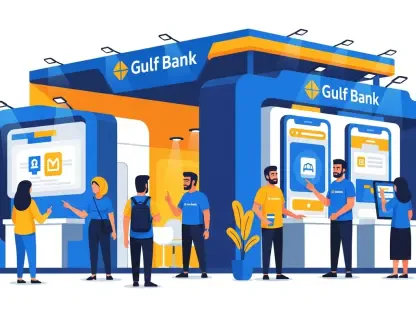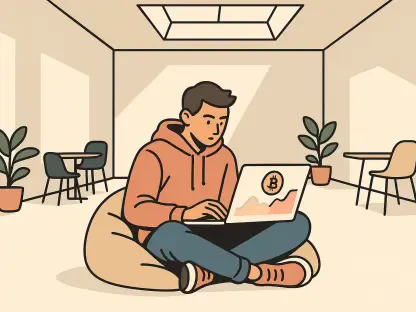In a nation where financial opportunity is often heralded as the cornerstone of the American Dream, the reality for many paints a starkly different picture, especially for the most vulnerable populations such as lower-income individuals and communities of color. The credit system, designed to assess financial reliability and open doors to loans, housing, and stability, frequently operates as an insurmountable barrier for those already grappling with systemic inequities. Far from being a neutral tool, it often deepens existing divides by penalizing those least equipped to navigate financial setbacks. This pervasive issue extends beyond mere numbers on a credit report, morphing into a social crisis that restricts access to basic necessities and perpetuates cycles of poverty. By examining the structural flaws in credit scoring, the predatory nature of alternative lending, and the profound human toll, a clearer understanding emerges of how this system disproportionately harms those who need support the most, demanding urgent attention and reform.
Unveiling the Harsh Reality of Credit Scores
The foundation of financial access in America often rests on credit scores, a metric that appears impartial but frequently mirrors deep-rooted systemic disparities rather than individual accountability. For lower-income households, the challenges of stagnant wages, exorbitant rent, and inadequate healthcare access create a fragile economic existence where a single unforeseen expense—be it a medical emergency or car repair—can devastate their credit standing. Once damaged, this score triggers a domino effect, inflating the cost of essentials like insurance premiums and security deposits. The system, rather than offering a safety net, becomes a punitive force that entrenches financial hardship, making recovery a distant prospect for those already struggling to make ends meet. This structural bias reveals a critical flaw: credit scores often punish circumstances beyond personal control, locking vulnerable individuals into a cycle of economic disadvantage with little opportunity for reprieve or improvement.
Beyond the immediate financial repercussions, a low credit score casts a long shadow over nearly every aspect of daily life, extending its impact far beyond the realm of borrowing. Employers may scrutinize credit histories during hiring processes, often overlooking qualified candidates due to past financial struggles, while landlords might reject rental applications, pushing individuals toward unstable housing situations. Even insurance companies frequently use these scores to justify higher rates, further burdening those with limited means. What begins as a minor financial misstep can thus evolve into a comprehensive barrier, blocking access to stable employment, secure homes, and affordable services. For the most vulnerable, this translates into a persistent state of exclusion, where a tarnished credit score becomes a label that restricts social and economic mobility, highlighting how deeply embedded inequities in the system amplify disadvantage across multiple facets of life rather than offering a fair chance to rebuild.
Navigating the Perils of Alternative Lending
When traditional banking avenues slam shut for those with poor credit, alternative lending options often emerge as a deceptive lifeline, promising quick relief but delivering long-term harm. Payday loans and bad credit loans target desperate individuals needing immediate funds for rent or emergencies, yet they come laden with exorbitant interest rates and rigid repayment terms that can spiral into unmanageable debt. Without a solid grasp of financial tools—such as distinguishing between installment loans with fixed payments and revolving credit with fluctuating balances—borrowers risk falling into traps that exacerbate their struggles. These lending practices, marketed as solutions, frequently deepen financial distress for the vulnerable, who lack the resources or education to navigate complex agreements. The temporary relief of cash in hand masks a harsh reality: alternative lending often profits from desperation, turning a short-term fix into a prolonged cycle of economic strain that is difficult to escape.
Compounding the issue is the glaring lack of regulatory oversight that allows predatory lending to thrive, disproportionately impacting those least able to bear the burden. Inconsistent state laws and insufficient enforcement create fertile ground for exploitative practices, where lenders impose punishing fees and rates with little accountability. Even institutions like the Consumer Financial Protection Bureau, tasked with safeguarding consumers, often face constraints from limited funding and political opposition, leaving gaps in protection that predatory lenders exploit. Vulnerable borrowers, already shut out by mainstream financial systems, find themselves at the mercy of an industry that prioritizes profit over fairness. This systemic failure underscores a broader problem: without robust regulations and consistent enforcement, alternative lending remains a dangerous pitfall rather than a genuine resource, perpetuating financial instability for those who can least afford additional setbacks in their pursuit of stability.
Exploring the Deeper Impact on Individuals and Society
Credit inequality transcends mere financial metrics, exacting a heavy psychological and emotional toll on those caught in its grip, often reshaping their entire sense of well-being. The relentless pressure of mounting debt and poor credit scores breeds chronic stress, eroding self-esteem and fostering a pervasive sense of shame that discourages seeking help. Families, too, bear the strain as financial uncertainty fuels tension, straining relationships and disrupting household harmony. For many in vulnerable communities, a low credit score becomes an invisible weight, silently undermining mental health and personal dignity as much as it impacts their wallets. This human cost, though less quantifiable than interest rates or loan denials, reveals a critical dimension of the credit crisis: it’s not just about money, but about the erosion of hope and stability in the lives of those already facing systemic challenges, amplifying their struggle in profound and lasting ways.
On a broader scale, credit inequality serves as a formidable obstacle to social mobility, reinforcing entrenched disparities and stifling upward progress, particularly for marginalized groups. When credit scores dictate access to critical opportunities—such as employment, housing, or educational loans—they become gatekeepers that perpetuate socioeconomic divides, often hitting communities of color hardest due to historical and ongoing inequities. A single financial misstep can thus cascade into a generational barrier, limiting future prospects and cementing inequality across lifetimes. This systemic issue challenges the notion of meritocracy, exposing how credit systems often function not as enablers of opportunity but as mechanisms that sustain exclusion. By intertwining financial standing with social outcomes, the credit framework entrenches disadvantage, making it clear that addressing this crisis requires more than individual effort—it demands a fundamental rethinking of how access and fairness are structured in society.
Charting a Path Toward Equitable Reform
Looking back, the journey to address credit inequality revealed a system that consistently penalized the most vulnerable through flawed scoring models and exploitative lending practices. Historical data and personal accounts underscored how lower-income individuals and communities of color bore the brunt of a framework that amplified systemic barriers rather than alleviating them. The psychological strain and societal exclusion tied to poor credit emerged as stark reminders of the issue’s depth, extending far beyond financial loss to impact dignity and opportunity. Regulatory shortcomings allowed predatory practices to persist, leaving many unprotected against cycles of debt. Reflecting on these challenges, it became evident that past efforts often fell short due to fragmented policies and resistance to change, highlighting the urgent need for a cohesive strategy to dismantle the inequities embedded in the credit landscape and ensure it no longer serves as a tool of punishment.
Moving forward, actionable reforms must prioritize fairness and access to reshape the credit system into a genuine pathway for opportunity rather than a persistent obstacle. Implementing nationwide interest rate caps could curb predatory lending, while expanding community-based credit unions offers safer borrowing alternatives for those excluded by traditional banks. Revising credit scoring models to account for positive payment histories, such as rent or utility bills, would provide a fuller picture of financial responsibility. Additionally, prohibiting the use of credit scores in non-financial decisions like hiring or renting could break the cycle of exclusion. Strengthening regulatory bodies like the Consumer Financial Protection Bureau with adequate resources and authority remains critical to enforce fair practices. These steps, grounded in a commitment to equity, suggest a future where financial tools empower rather than punish, urging policymakers, advocates, and communities to collaborate in building a system that truly serves all Americans.









